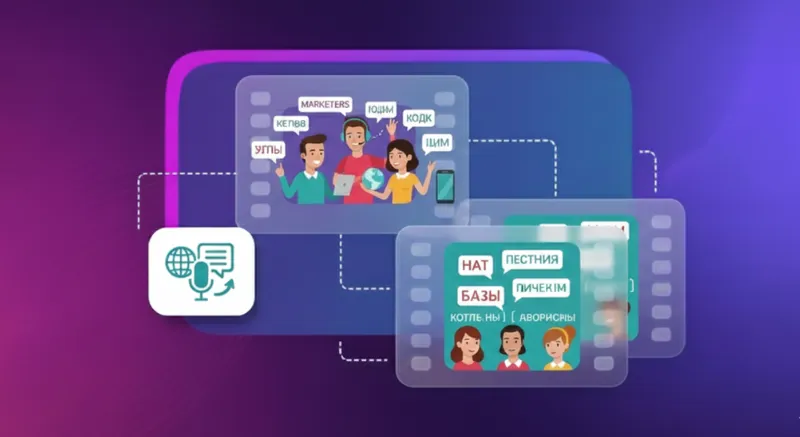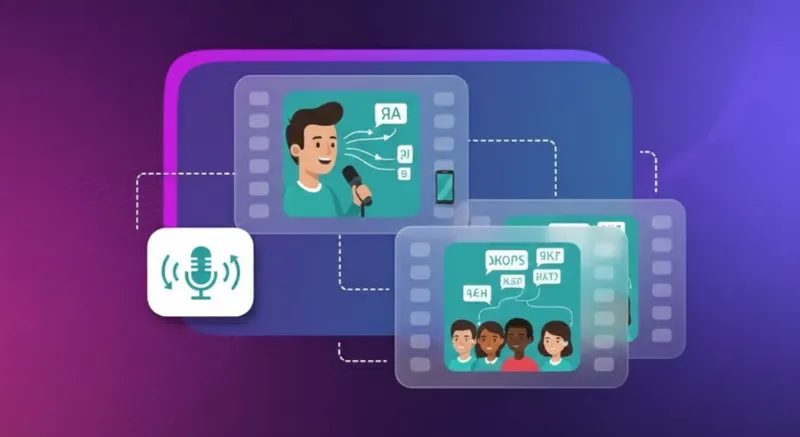Translation vs. Localization: Tailoring Content for Global Success

When translated into Chinese, KFC’s classic “Finger-Lickin’ Good” slogan reads as “Eat Your Fingers Off.” Well, that’s certainly not very tasty.
Similarly, Coors’ “turn it loose” slogan in Spanish became “suffer from diarrhea.”
Evidently, these translated advertisements failed to resonate with the local audience, resulting in significant financial losses for companies.
When venturing into new markets, businesses must be mindful of the need to adapt their content to align with different cultures. This highlights the crucial role of localization in content creation.
Together, translation and localization make content more accessible to the world. It gives a brand broader reach and connects people across nations through better communication. Let’s dive a little deeper.
What is Translation?
Translation is when words are changed from one language to different languages. When you translate, you adapt the message of the content to suit the new language. Translation is just a starting point that modifies the source language.
What is Localization?
Localization is a broader term where the experience is adapted in different languages, not just the message. It looks at the intent of the content, infuses cultural context, adapts all media, like images and videos, and looks at the targeted region’s date, currency, overall formatting, and legal rules.
Differences Between Language Translation and Localization
While translation and localization are the two sides of the same coin and serve the same purpose of globalizing content in different languages, they cannot be used interchangeably. Here are some of the critical areas where the differences come out.
Cultural vs. Linguistic Adaptation
Language translation is only about linguistic adaptation, focusing on removing the language barrier by modifying the words. Localization goes a step further to adapt the content by considering cultural practices and norms for the target language. For example, if you are translating a travel guide from English to Japanese, the English one would mention being respectful when visiting the home of a local. The Japanese guide would include the tip of taking your shoes off before entering the house as a sign of respect.
Audience and Context
While translation deals only with text in the native language, it does not dive deep into the target market and audience preferences. Localization considers what the audience wants and ensures the context is not lost while adapting the content.
Idioms and Expressions
Localization would ensure that phrases like “Break a leg” are adapted into the local language and not translated as it would lose meaning. The phrase originated from theatre superstitions and means “Good luck.” A direct translation of break a leg would not make sense in Spanish, and simply saying “Buena suerte” would lose the theatrical element. That is why a localized translation would be “Mucha mierda.”
Standard greetings like “What’s up?” would also get lost in translation without localization. This applies to slogans, slang, date, and number formats, as well as text direction.
Visual Elements
Translation completely ignores the visual elements of content like videos, charts, graphs, images, graphics, icons, symbols, and colors. Colors are known to evoke emotions and reflect sociocultural factors. White, for example, might symbolize mourning in one country and weddings in another. Localization adapts all of these visual elements. They are localization assets.
Also Read : A Comparative Guide to Internationalization and Localization
Translation as a Component of Localization

While localization is a broader process that can create more compelling content, translation is at the core of it. Translating content plays a significant role in localizing it in many ways:
- Translation is the starting point for localizing content; it is one of the key processes.
- It breaks down the language barrier, creating a base to adapt the content further by changing the visuals, formatting, greetings, and phrases.
- A good translation can define the project’s impact as it stays true to the source content. Meanwhile, even the most excellent localization expert cannot salvage an inaccurate translation.
Netflix is an excellent example of audio & video translation done right. With most of its content being watched outside of the countries (take the German series Dark, for example, where 9 out of 10 viewers were not from the country and did not speak the same language), it translates the subtitles accurately to make the content more accessible.
But companies like IKEA decide to play it safe as they understand the impact of translation gone wrong. This is why the Swedish company decided to retain the creative Swedish names for its products in all the countries it has a presence in. It supported that with instructions and manuals in local languages. For example, a sofa set is still called EKENÄSET (Swedish) on IKEA’s website in India. But the product description is in English.
Translation or Localization?
We have curated a table covering the uses and benefits of both translation and localization to help you decide which one suits your needs more.
When to Choose Translation?
1. Multilingual Communication
Translation is a quick and effective way if your focus is on communication. When you want to convey the same message across multiple languages, translation serves the purpose. The translated text is also suitable for subtitles.
2. Cost-Effectiveness
AI-powered translation can be carried out at a fraction of the cost of the conventional process. It is also much cheaper than localization. So, it’s a better fit if you are on a budget or want to target multiple target markets.
3. Legal and Regulatory Compliance
In some countries, making the content available in the local language is essential. If you want to meet compliance and quickly get your content global, especially when you have visuals to bring in context, opt for translation.
When to Choose Localization?
1. Cultural Sensitivity
Localization is the way to go when you need to meet linguistic and cultural norms in cases like adapting eLearning content. Including cultural references will make the localized content as good as being written originally for the target market.
2. User Experience
When content is made available in a user’s own language, the user understands and relates to it. It also increases engagement, piques their interest, and enhances satisfaction. If maximizing the user experience is your goal, you can meet expectations with localization.
3. Marketing and Branding
Brand recall and reliability define its success. With localization, this is possible. It inspires trust and raises brand awareness, which is crucial in a new market. The localization process cannot happen without understanding the target audience’s psyche. This understanding can significantly improve marketing efforts.
Get the Best with Murf AI
Murf AI has already revolutionized the voiceover landscape with top-notch products like text to speech, voice cloning, and voice changer. More recently, the firm introduced AI translation services specifically for enterprise clients.
With Murf's Sound Translator, you can easily convert your voiceover projects into 40+ global languages in a few simple steps. Log into Murf Studio and select the “translate” feature on the platform. Next, choose your preferred target language and set the tonality (business, journalistic, conversations, and more). Murf assigns a default voice in the target language. Alternatively, you can choose an AI voice of your choice. As the final step, name your project and save it in your desired location. You’ll see the translation progress bar and be ready to preview and edit in minutes. And there you have it! A translated version of your project in minutes.
In addition, Murf's natural-sounding AI voices can be used for video localization for multiple formats. And no, you don't need to be tech-savvy to know how to use this highly-accurate tool. The UI is intuitive, powerful, and creative, offering everything at your fingertips. You can also scale your content effortlessly.
Get started on your global journey in a few seconds and see what translation can do for you. Murf AI is also working on some exciting feature updates to expand its services for translation and localization. Stay tuned for more!

Frequently Asked Questions
How does translation differ from localization?
.svg)
Translation and localization serve the same purpose: reaching a larger market through language adaptation. But translation, a part of localization, deals with the text of the content; localization looks at the visuals and cultural and legal context. While translation preserves the source content, localization makes it relevant and relatable for the target audience by looking at everything from date formats to images.
Why is accurate translation crucial for successful localization?
.svg)
Accurate translation results in effective localization as it would preserve the original text’s meaning, helping adapt it correctly to the target market’s requirements. An inaccurate translation could lead to misinterpretation, loss of original meaning, and, ultimately, give rise to the phrase “lost in translation.”
What industries benefit the most from localization?
.svg)
Industries benefitting from localization are many. Some of them include:
- Technology: Web pages, apps, tech products.
- eCommerce: Product listings, marketing materials.
- Film, TV, OTT: Foreign language dubbing, subtitling, scripting.
- Gaming: Voiceovers, scripts, graphics, gameplay.
- Marketing: Advertising campaigns, marketing materials.
- Education: eLearning content like videos, presentations, and eBooks.














